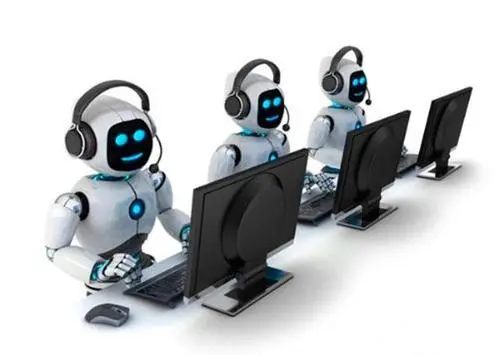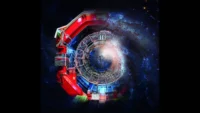The recent hot chat robot ChatGPT is essentially a customer service robot, but the algorithm behind it is more refined, and the amount of pre-trained data is also larger.
Let’s take a look at the technology behind the customer service robot: the dialogue recommendation system.
1. Overview of dialogue recommendation system
The process of users using the dialogue recommendation system is essentially a process of assisting users in decision-making after multiple rounds of information interaction.
The Conversational Recommendation System (CRS) breaks the barrier of information asymmetry between the system and the user in the static recommendation system through rich interactive behaviors, allowing the recommendation system to dynamically capture user preferences in the interactive dialogue with the user. One direction guides users to discover their new points of interest by exploring their current interest preferences. On the other hand, during the interaction process, the user’s feedback is received in real time, and the strategy of the recommendation model is updated to realize dynamic learning and updating. This is a recommendation-oriented dialogue system, which captures the interests of users through online dialogue with users and recommends the answers or products that users need.
General dialogue systems are usually divided into two categories: task-oriented and non-task-oriented. The latter are what are commonly referred to as chatbots. The task-oriented dialogue system is designed to help users complete specific tasks, such as helping users find the goods they need, book hotel restaurants, etc. A task-oriented dialogue system for recommendation tasks can usually be regarded as a dialogue recommendation system in the form of natural language text and voice interaction. In the recommendation task, it has high commercial value.
2. Characteristics of dialogue recommendation tasks
From the perspective of the application of dialogue recommendation system, it has two typical characteristics: multi-round interaction and goal orientation.
1. Multiple rounds of interaction
In the traditional system, for example, when searching for products on Taobao, when users look for products with specific attributes, they will search actively. For example, you can search for “men’s coats in spring”. In this scenario, users construct their own queries, and the recommendation effect depends not only on search engines, but also on users’ own professional knowledge to construct appropriate query keywords. This traditional recommendation system requires users to input possible attribute options based on their prior knowledge in order to accurately locate suitable products. But in many scenarios, users do not have such prior knowledge. In this case, users expect the system to proactively introduce them to potential items they might like.
The multi-round interaction feature in the dialogue recommendation system can make up for the shortcomings of the user’s active search in the traditional recommendation system. In the real-time interaction between the system and the user, it can actively ask the user to show the user’s unknown item attribute space, and use the user’s feedback to directly understand the user’s needs and attitudes towards certain attributes, and build user interest. portrait, so as to make the correct recommendation.
2. Goal-oriented
The goal and task of the dialogue recommendation system is to recommend the products that the user is interested in. Therefore, the ultimate goal is to achieve successful recommendation and interact to obtain user preference information. CRS and traditional recommendation systems have the same “recommendation” goal, but two The latter are completely different in the operation and implementation of the system. The traditional recommendation system can be regarded as a system that unilaterally outputs recommended items to users. CRS, on the other hand, focuses on practical real-time feedback, continuously actively explores users’ points of interest, and updates subsequent recommendation strategies.
3. The basic functional modules of the dialogue recommendation system
A standard dialogue recommendation system consists of three functional modules: user intent understanding module, dialogue strategy module and recommendation module.
1. User intent understanding module
The user intent understanding module is a module that directly exchanges information with users. Its input was mainly dialogue text in the early years. With the development of technology, multimodal data and user behavior data have increasingly become the main input data sources for dialogue recommendation systems.
2. Dialogue strategy module
For the recommendation system, there are very few positive feedback data that can be based on, which causes the information mismatch between the system and the user, and a failed exploration will waste the user’s time, hurt the user’s preference, and cause Churn of users. Therefore, pursuing the balance of exploration and yield is a key issue in dialogue recommender systems. The main task of the dialogue strategy module is to solve this problem.
In the process of multiple rounds of interaction, this problem manifests itself in the fact that the system needs to determine whether to continue to ask the user or to recommend products based on the information already obtained, thereby increasing the probability of the user choosing a product. This is a typical game problem. Too many inquiries may cause the user’s disgust, while too few inquiries will cause the lack of user preference information. Therefore, a good dialogue strategy needs to intelligently balance the two indicators of dialogue turns and recommendation accuracy.
3. Recommended modules
The recommendation module is the module that implements the recommendation function in the dialogue recommendation system. According to the captured user information, it recommends the target items that the user is most interested in currently. In most CRS, the recommendation module adopts a simple recommendation model, such as matrix decomposition, because the simple recommendation model can already meet the recommendation requirements of the dialogue recommendation system, and the use of an overly complex recommendation model will make the system as a whole complicated. The degree rises, making it difficult to train the dialogue recommendation system.




GIPHY App Key not set. Please check settings